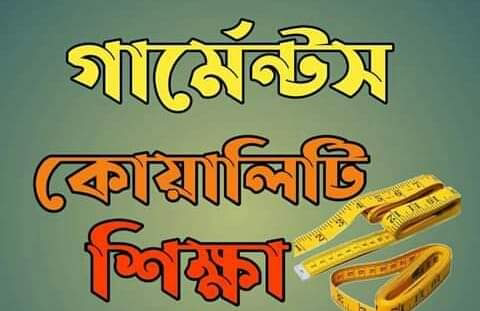Book Name: Industrial Engineering in Apparel Production
Author : V Ramesh Babu
Number of Pages: 184
Published Date: 1st November 2011
Woodhead Publishing India
Description
The garment manufacturing industry faces many global challenges due to various factors including competition, increased production costs, less productivity/efficiency and labor attribution. So, there is a need to focus and concentrate on identifying the real issues, taking corrective actions suited to the specific industrial centre of the unit, empowering the technical and managerial staff by enhancing their knowledge and ability, analysing orders efficiently and deciding whether actions are viable for the company.
Industrial engineering in apparel production reviews the techniques for internal correction and openness for a knowledge/technology approach that needs to be built into the mind of the faculties to be upgraded as system run, rather than people run. The author emphasizes that the industrial engineering concept needs to be imparted to the facilities to increase productivity.
With its highly distinguished author, Industrial engineering in apparel production is a valuable reference for students, researchers, industrialists, academics and professionals in the clothing and textile industry.
Table of Contents
Concepts of production and productivity; Role of apparel engineering; Method analysis; Motion economy; Apparel production systems and factory layout; Work measurement; Application of IE techniques in garment industry; Line balancing; Scientific method of training; Industrial engineering in apparel quality control.
Details
Details
INDEX
1 Concepts of production and productivity 1
1.1 Introduction 1
1.2 Production 2
1.3 Productivity 5
1.4 Standard of living 8
1.5 Productivity measures 11
1.6 References 13
2 Role of apparel engineering 15
2.1 Introduction 15
2.2 Apparel engineering 16
2.3 Methodology 17
2.4 Benefits of engineering 18
2.5 Tools and techniques for apparel engineering 18
2.6 Role of industrial engineer 21
2.7 Pre-production activities of a supervisor 24
2.8 References 28
3 Method analysis 29
3.1 Definition 29
3.2 Recording the method 31
3.3 Operation process chart 33
3.4 Flow process chart 35
3.5 Flow diagram 37
3.6 String diagram 38
3.7 Travel chart (From – To chart) 40
3.8 Multiple activity chart (or) man–machine chart 44
vi Contents
3.9 References 45
4 Motion economy 47
4.1 Principles of motion economy 47
4.2 Two-handed process chart 50
4.3 Micro motion study 52
4.4 Study of method recorded 55
4.5 Methods improvement 60
4.6 References 62
5 Apparel production systems and factory layout 63
5.1 Introduction 63
5.2 Garment production systems 63
5.3 Group system 64
5.4 Progressive bundle synchro straight line system – batch system 66
5.5 Unit production system (UPS) 69
5.6 Quick response sewing system 71
5.7 Layout objectives 72
5.8 Designing the layout 74
5.9 References 77
6 Work measurement 79
6.1 Definition of work measurement 79
6.2 Techniques of work measurement 80
6.3 Time study 87
6.4 Selecting the job 91
6.5 Standard allowed minute (SAM) 96
6.6 Rating factor 100
6.7 Allowances 104
6.8 Other methods to set time standards 108
6.9 References 112
7 Application of IE techniques in garment industry 113
7.1 Capacity study 113
7.3 Operator performance 115
7.4 Follow-ups 117
7.5 Work in process (WIP) 120
Contents vii
7.6 Operation bulletin 122
7.7 References 127
8 Line balancing 129
8.1 Balancing 129
8.2 Steps to balance the line 131
8.3 Initial balance 134
8.4 Balance control (Operating a line) 140
8.5 Efficiency 142
8.6 Cycle checks 143
8.7 Balancing tools 145
8.8 References 151
9 Scientific method of training 153
9.1 SMT (Scientific method of training) 153
9.2 Methodology behind SMT 155
9.3 Selection test 159
9.4 Basic exercise 161
9.5 Paper exercise 162
9.6 Fabric exercise 163
9.7 References 168
10 Industrial engineering in apparel quality control 169
10.1 Introduction 169
10.2 Quality is a multi-dimensional aspect 171
10.3 How to control quality? 172
10.4 How to achieve good quality? 174
10.5 Quality specifications sheet 175
10.6 Quality training 176
10.7 References 179
4 Motion economy 47
4.1 Principles of motion economy 47
4.2 Two-handed process chart 50
4.3 Micro motion study 52
4.4 Study of method recorded 55
4.5 Methods improvement 60
4.6 References 62
5 Apparel production systems and factory layout 63
5.1 Introduction 63
5.2 Garment production systems 63
5.3 Group system 64
5.4 Progressive bundle synchro straight line system – batch system 66
5.5 Unit production system (UPS) 69
5.6 Quick response sewing system 71
5.7 Layout objectives 72
5.8 Designing the layout 74
5.9 References 77
6 Work measurement 79
6.1 Definition of work measurement 79
6.2 Techniques of work measurement 80
6.3 Time study 87
6.4 Selecting the job 91
6.5 Standard allowed minute (SAM) 96
6.6 Rating factor 100
6.7 Allowances 104
6.8 Other methods to set time standards 108
6.9 References 112
7 Application of IE techniques in garment industry 113
7.1 Capacity study 113
7.3 Operator performance 115
7.4 Follow-ups 117
7.5 Work in process (WIP) 120
Contents vii
7.6 Operation bulletin 122
7.7 References 127
8 Line balancing 129
8.1 Balancing 129
8.2 Steps to balance the line 131
8.3 Initial balance 134
8.4 Balance control (Operating a line) 140
8.5 Efficiency 142
8.6 Cycle checks 143
8.7 Balancing tools 145
8.8 References 151
9 Scientific method of training 153
9.1 SMT (Scientific method of training) 153
9.2 Methodology behind SMT 155
9.3 Selection test 159
9.4 Basic exercise 161
9.5 Paper exercise 162
9.6 Fabric exercise 163
9.7 References 168
10 Industrial engineering in apparel quality control 169
10.1 Introduction 169
10.2 Quality is a multi-dimensional aspect 171
10.3 How to control quality? 172
10.4 How to achieve good quality? 174
10.5 Quality specifications sheet 175
10.6 Quality training 176
10.7 References 179
How to get: Click Download Link

















1 টি মন্তব্য:
Thank you for uploading such an important book. I really appreciate it.
একটি মন্তব্য পোস্ট করুন